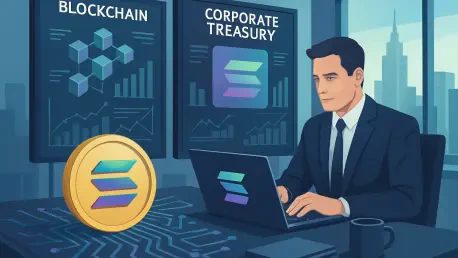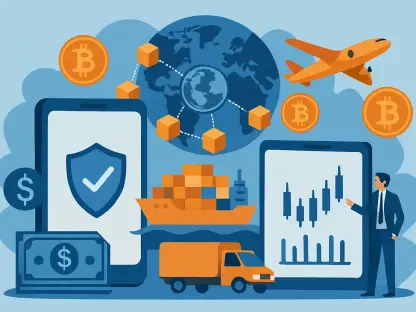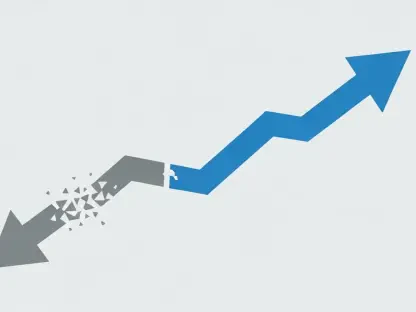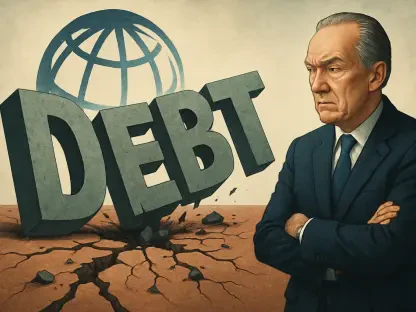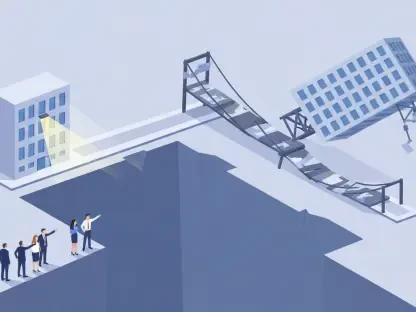What happens when a medical device company, known for pioneering safety syringes, stakes a $400 million claim in the wild frontier of blockchain technology? Sharps Technology, Inc., a Nasdaq-listed entity, has jolted the financial and healthcare sectors with a daring pivot into digital assets, marking a seismic shift that could challenge how industries perceive value in a digital age. This isn’t just a footnote in corporate strategy—it’s a bold move with far-reaching implications. The focus on Solana (SOL), a blockchain renowned for speed and scalability, raises eyebrows and questions alike. Could this be the blueprint for merging traditional business with decentralized finance?
The significance of this story lies in its audacity and timing. As companies across sectors grapple with economic uncertainty and seek innovative growth paths, Sharps Technology’s move to build what it claims is the largest Solana treasury signals a potential paradigm shift. This isn’t merely about diversifying assets; it’s about redefining corporate treasuries in an era where digital currencies are gaining institutional traction. The implications ripple beyond one company, hinting at a future where blockchain isn’t just tech jargon but a core financial strategy.
A Bold Leap into Digital Assets—Why Now?
Sharps Technology’s transition from healthcare innovation to blockchain investment seems, at first glance, like an unlikely detour. Historically focused on smart-safety syringe products, the company has now secured over $400 million through a private placement to dive into Solana’s ecosystem. This pivot arrives amid a backdrop of inflation concerns and a corporate hunger for alternative revenue streams, making the timing of such a gamble particularly noteworthy. The question isn’t just why a medical firm would take this route, but why this moment feels ripe for such a radical reinvention.
The broader landscape of corporate America offers clues. With traditional markets fluctuating and interest rates posing challenges, businesses are increasingly eyeing digital assets as hedges against uncertainty. Sharps Technology’s bet on Solana reflects a calculated risk to harness blockchain’s potential for high yields and long-term growth. This move challenges conventional wisdom, pushing boundaries on what a company’s balance sheet can represent in today’s economy.
Beyond financial motives, there’s a cultural shift at play. Blockchain technology, once dismissed as a niche interest, now captivates boardrooms seeking to stay ahead of disruption. Sharps Technology’s leap isn’t just about numbers—it’s a statement of intent to be part of a digital revolution. As industries converge, this strategy could inspire others to explore uncharted financial territories.
The Convergence of Traditional Business and Blockchain Innovation
Diving deeper into this trend, the fusion of established industries with blockchain isn’t merely opportunistic—it’s becoming a survival tactic. Companies like Sharps Technology are recognizing that digital transformation isn’t optional but essential for resilience. The allure of decentralized systems lies in their promise of transparency and efficiency, offering a counterpoint to traditional financial models burdened by intermediaries and slow processes.
This intersection carries high stakes for corporate finance. Blockchain adoption by non-tech firms could reshape how treasuries operate, turning digital assets into mainstream tools for value storage and generation. Solana, with its rapid transaction capabilities, stands as a compelling choice for firms looking to test these waters. Sharps Technology’s initiative mirrors a growing acknowledgment that staying competitive means embracing technologies once considered speculative.
Moreover, the global push toward blockchain integration highlights a shift in mindset. From supply chain tracking to tokenized assets, the applications extend far beyond cryptocurrency trading. For a company rooted in healthcare, this diversification into Solana suggests a vision where innovation isn’t confined to one sector but spans multiple domains, potentially setting a precedent for others to follow.
Dissecting Sharps Technology’s Solana Treasury Strategy
At the heart of this bold maneuver is a meticulously structured financial plan. The over $400 million private investment in public equity (PIPE) transaction includes common stock, pre-funded warrants, and stapled warrants priced at $6.50 per unit, with exercisable options at $9.75 for three years. Backed by heavyweights like ParaFi and Pantera, this deal signals robust investor confidence in Sharps Technology’s vision to pivot toward digital assets, showcasing a blend of traditional and crypto-focused financial support.
Solana’s selection as the cornerstone of this treasury isn’t arbitrary. Boasting 8.9 billion quarterly transactions, a daily trading volume of $6 billion, and a 7% staking yield, Solana outpaces many competitors in performance metrics. These figures underscore why Sharps Technology aims to amass the largest SOL treasury, viewing it as a gateway to consistent returns and exposure to a thriving blockchain ecosystem driving decentralized finance and Web3 advancements.
Strategic partnerships amplify this ambition. A non-binding letter of intent with the Solana Foundation to acquire $50 million in SOL at a 15% discount to a 30-day average price offers a cost-effective entry point, pending certain conditions. Additionally, leadership from Chief Investment Officer Alice Zhang and advisor James Zhang, both with deep Solana ecosystem ties, equips the company with expertise to navigate this complex terrain, positioning it as a serious contender in corporate blockchain adoption.
Backing the Vision—Insights from Experts and Market Trends
Industry voices add weight to Sharps Technology’s calculated risk. Analysts often position Solana as a formidable rival to Ethereum, citing its superior speed and scalability as ideal for decentralized finance applications. With institutional traction growing, Solana’s infrastructure supports everything from stablecoins to tokenized assets, making it a darling among forward-thinking firms. This consensus lends credibility to the idea that a Solana treasury could be a game-changer for corporate finance.
Market trends further validate this direction. Corporate digital asset holdings, exemplified by MicroStrategy’s Bitcoin portfolio, have paved the way for strategies like Sharps Technology’s. Solana’s metrics—such as 3.8 million daily active wallets—highlight its real-world utility, distinguishing it in a crowded blockchain space. Experts note that such adoption reflects a maturing market where digital assets are no longer fringe but foundational to financial innovation.
Consider a hypothetical scenario: a multinational corporation using Solana’s high-throughput network to settle cross-border payments instantly, slashing costs and delays. This isn’t science fiction—it’s a glimpse into how blockchain can solve tangible problems. As more companies witness these benefits, Sharps Technology’s early mover advantage could inspire a wave of similar treasury experiments, bridging abstract potential with practical outcomes.
Navigating the Solana Strategy—Practical Insights for Stakeholders
For investors, businesses, and policymakers observing this development, Sharps Technology’s approach offers a roadmap for evaluating blockchain integration. Key considerations include assessing platforms based on transaction throughput and staking yields—Solana’s 7% return sets a benchmark for yield-focused strategies. Understanding these metrics helps stakeholders gauge whether digital assets align with their financial goals or risk profiles.
Risk remains a critical factor. Market volatility and regulatory uncertainty loom large, as highlighted by disclaimers in Sharps Technology’s announcement cautioning against potential losses in cryptocurrency investments. Stakeholders must weigh these hazards against the promise of diversification, ensuring robust risk management frameworks are in place to handle the unpredictable nature of digital markets.
Finally, the broader opportunity lies in viewing digital assets as tools for innovation. Businesses might explore treasury diversification to generate passive income, while investors could analyze similar corporate moves for portfolio inspiration. Policymakers, meanwhile, face the task of crafting balanced regulations that foster growth without stifling experimentation. This multifaceted perspective equips all parties to engage thoughtfully with blockchain’s evolving role in finance.
Reflecting on this groundbreaking chapter, Sharps Technology took a monumental step that challenged norms and sparked dialogue across industries. The audacious $400 million investment in Solana stood as a testament to the blurring lines between traditional business and digital frontiers. For those inspired by this journey, the next move involved staying informed on blockchain developments and evaluating how decentralized technologies could fit into personal or corporate strategies. As the financial landscape continued to evolve, embracing calculated risks and learning from pioneers like Sharps Technology became essential for navigating the uncharted waters of tomorrow’s economy.
